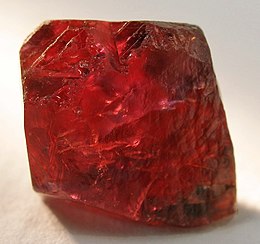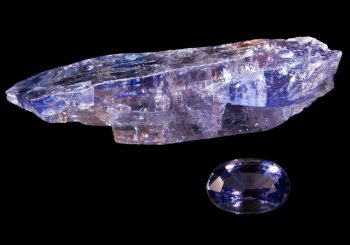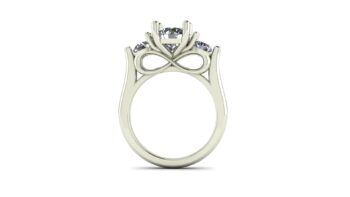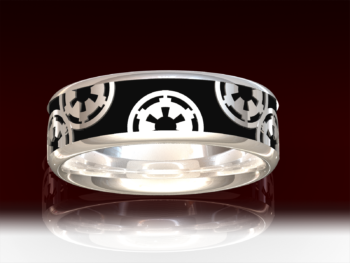The History Of Gemstones is a fascinating one. They have been around and used in jewelry for thousands of years. But how, when, or where were they discovered? What purpose did they serve? How did they become some of the most valuable items in the world? We will explore these questions and more as we discuss the history of some of the most coveted gemstones in this post.
History Of Gemstones
Gemstones, those dazzling beauties that adorn our jewelry and captivate our hearts, have a fascinating history of discovery. Picture this: ancient humans, roaming the earth with curious eyes and nimble hands, stumbling upon these precious gems by sheer chance. These sparkling wonders were discovered in various ways, from accidental encounters to deliberate mining efforts. It’s safe to say that gemstones were the original bling, long before diamonds became a girl’s best friend.
One of the most common ways gemstones were discovered was through mining. Ancient civilizations, recognizing the allure and value of these precious stones, would dig deep into the earth in search of them. These early miners would then polish and shape the gemstones into exquisite pieces of jewelry, showcasing their natural beauty for all to admire.
But not all gemstone discoveries were intentional. Some were simply stumbled upon by lucky individuals going about their daily lives. Imagine a shepherd, tending to his flock in a vast meadow, when suddenly he spots a shimmering stone peeking out from the ground. Curiosity piqued, he picks it up and realizes he has stumbled upon a precious gemstone. Talk about a stroke of luck! These accidental discoveries added an element of surprise and wonder to the world of gemstones, reminding us that sometimes the most precious things in life are found when we least expect them.
Throughout history, gemstones have also been associated with wealth and status. In medieval Europe, only the nobility and the wealthy could afford to wear gemstone jewelry, symbolizing their social standing. However, today, gemstones continue to be highly valued and sought after, with some rare stones fetching exorbitant prices in the market.
How Were Gemstones Used In The Past
Gemstones have been used by humans for thousands of years, and their significance in the past cannot be underestimated. These beautiful and precious stones were not only valued for their aesthetic appeal, but also for their perceived mystical and healing properties. In ancient civilizations, gemstones were often worn as amulets or talismans to ward off evil spirits and bring good luck. They were also used as symbols of power and wealth, adorning the crowns and jewelry of kings and queens. Today, while gemstones are still cherished for their beauty, their historical uses serve as a fascinating reminder of the rich cultural traditions of the past.
One of the most interesting aspects of gemstones in the past is their association with various beliefs and superstitions. For example, the ancient Egyptians believed that certain gemstones, such as lapis lazuli and turquoise, had protective qualities and could ward off evil spirits. They also believed that gemstones had healing properties, and would use them in amulets and jewelry to promote good health and well-being. Similarly, in ancient Greece, gemstones were believed to have magical powers and were often used in rituals and ceremonies.
In addition to their spiritual and symbolic significance, gemstones were also highly valued for their rarity and beauty. In ancient Rome, for instance, gemstones were considered a status symbol and were often used to adorn the clothing and accessories of the wealthy. The Romans also believed that gemstones had the power to enhance one’s beauty and attractiveness. This belief was so strong that they would even crush gemstones into powder and use them as cosmetics.
Colored Gemstones Today
Colored gemstones have become increasingly popular in recent years. From vibrant rubies to sparkling sapphires, these gemstones offer a unique and eye-catching alternative to traditional diamonds. Whether used in engagement rings, statement jewelry, or even as a personal fashion statement, colored gemstones have found their place in the world of fashion and luxury.
One of the reasons for the surge in popularity of colored gemstones is their versatility. Unlike diamonds, which are typically colorless, colored gemstones come in a wide range of hues and tones. This allows individuals to express their personal style and individuality through their choice of gemstone. Whether you prefer the deep blue of a sapphire, the fiery red of a ruby, or the vibrant green of an emerald, there is a colored gemstone to suit every taste and occasion.
In addition to their aesthetic appeal, colored gemstones also hold symbolic meaning. Many cultures and traditions associate specific gemstones with certain qualities or attributes. For example, rubies are often associated with love and passion, while emeralds are said to bring good luck and prosperity. By wearing a colored gemstone, individuals can not only enhance their outfit but also convey a deeper message or sentiment.
Sapphires
In the history of gemstones, Sapphires have a rich and fascinating history. These stunning gemstones have been prized for their beauty and rarity for centuries. The word “sapphire” comes from the Latin word “sapphirus,” which means blue. However, sapphires can actually come in a variety of colors, including pink, yellow, and even colorless.
Ancient civilizations were captivated by the allure of sapphires. The ancient Greeks believed that sapphires protected their wearers from harm and envy. In medieval times, sapphires were associated with royalty and were believed to bring wisdom and good fortune. They were even used as a test of loyalty, as it was believed that a sapphire would change color if worn by an unfaithful person.
Today, sapphires continue to be highly sought after. They are a popular choice for engagement rings and other fine jewelry. Not only are they stunningly beautiful, but they also have a durability that makes them perfect for everyday wear. Whether you’re a history buff or simply appreciate the beauty of gemstones, the history of sapphires is a fascinating journey through time.

Ruby
Rubies, those dazzling red gemstones that captivate our imaginations, have a special place in the History Of Gemstones. It is one of mystery. Legend has it that the first rubies were discovered by early civilizations who believed they were drops of blood from the gods. While this may be a charming tale, the truth is that rubies were actually discovered through a combination of exploration, mining, and sheer luck.
The exact origins of the discovery of rubies are shrouded in mystery. However, it is believed that ancient civilizations in India and Myanmar were among the first to stumble upon these precious gems. These early civilizations were known for their rich deposits of gemstones, and it was during their mining expeditions that rubies were unearthed. Imagine the excitement and wonder of those early miners as they unearthed these vibrant red stones, not knowing the true value they held.
Over time, the popularity of rubies spread across the globe, captivating the hearts of people from all walks of life. From royalty to commoners, everyone desired these fiery gemstones. Their vibrant color and rarity made them a symbol of wealth, power, and passion. Even today, rubies continue to be highly sought after and cherished by gemstone enthusiasts around the world.

Emerald
Emeralds were discovered through a combination of luck and human curiosity. The earliest known emerald mines date back to ancient Egypt. There, the vibrant green gemstone was highly prized by pharaohs and nobility. It is believed that the Egyptians stumbled upon emeralds while mining for other precious stones, such as amethyst and turquoise. However, once they laid eyes on the captivating beauty of emeralds, they quickly became enamored with their unique color and brilliance.
Throughout the History Of Gemstones, emeralds have been associated with various legends and myths. In ancient Rome, for example, emeralds were believed to be a symbol of Venus, the goddess of love and beauty. This association further enhanced the desirability and allure of emeralds among the elite. Over time, emerald mines were discovered in other parts of the world, such as Colombia, Brazil, and Zambia. This lead to wider availability of these precious gemstones.
Today, emeralds continue to be highly sought after for their exquisite beauty and rarity. Their rich green color, often described as “the color of life and nature,” makes them a popular choice for jewelry. Whether set in a ring, necklace, or earrings, emeralds add a touch of elegance and sophistication to any ensemble. So next time you admire a stunning emerald piece, remember the fascinating journey that led to its discovery and appreciate the timeless allure of this remarkable gemstone.

Tanzanite
Tanzanite is a late arrival in the History Of Gemstones. It wasn’t discovered until the late 1960s in Tanzania, hence the name. They were found in the Mererani Hills near the city of Arusha. The gemstone was initially mistaken for sapphire due to its blue color. However, it was later identified as a new mineral called zoisite. Tanzanite’s vibrant hues and unique trichroic nature make it a highly sought-after gemstone in the jewelry industry.
The discovery of Tanzanite brought a significant economic boost to Tanzania. The gemstone quickly gained popularity and became a symbol of luxury and elegance. Its rich blue color, often with hints of purple, captivates jewelry enthusiasts around the world. Tanzanite’s scarcity and exclusivity further contribute to its allure and high value.

Aquamarine
Aquamarine is a beautiful gemstone that captivates with its mesmerizing blue-green hues. It was discovered centuries ago through a combination of natural occurrences and human curiosity. Legend has it that sailors, while navigating the treacherous seas, stumbled upon this gemstone, mistaking it for a treasure trove of precious jewels. Little did they know that they had stumbled upon a gem that would become highly sought after in the world of jewelry.
The actual discovery of aquamarine can be attributed to the exploration of mineral-rich regions. Geologists and gem enthusiasts, driven by their insatiable curiosity, scoured the Earth in search of new and valuable gemstones. It was during one of these expeditions that aquamarine was unearthed, hidden deep within the Earth’s crust.
The allure of aquamarine lies not only in its vibrant color but also in its alleged mystical properties. Some believe that this gemstone possesses the power to calm the turbulent waters of one’s emotions, bringing about a sense of tranquility and peace. Whether or not you believe in the metaphysical properties of gemstones. There’s no denying the undeniable beauty and charm of aquamarine.
Opal
Opal, the captivating gemstone with its mesmerizing play of colors, has a fascinating origin story in the History Of Gemstones. Discovered in ancient times, the exact details of its first encounter with mankind remain shrouded in mystery. However, it is believed that opal was first discovered in the deserts of Australia. Opals continue to be mined in Australia to this day. The discovery of opal sparked a wave of excitement and curiosity as people marveled at its unique beauty and enchanting iridescence.
Legend has it that the discovery of opal can be attributed to a stroke of luck or perhaps a fortunate accident. It is said that a group of indigenous Australians stumbled upon opal while traversing the arid landscapes of the Outback. Drawn to the shimmering colors emanating from the ground, they soon realized that they had stumbled upon something truly extraordinary. Word of this remarkable find quickly spread. And soon, prospectors from all corners of the globe flocked to Australia in search of their own piece of opal magic.
Opal’s discovery not only captivated the hearts of those who beheld its beauty, but it also sparked a frenzy of mining activity. Opal fields sprung up across Australia, with miners tirelessly digging in the hopes of unearthing the next magnificent gem. Today, Australia remains the world’s leading producer of opal, with its opal-rich regions attracting countless visitors and gem enthusiasts from around the world.

Tourmaline
Tourmaline, the dazzling gemstone that captivates with its vibrant colors, has a cool place in the History Of Gemstones. Legend has it that while journeying through Brazil, a Spanish conquistador stumbled upon a shimmering green stone. Enchanted by its beauty, he believed it to be an emerald. However, upon closer examination, it was revealed to be a previously unknown mineral – tourmaline. This serendipitous encounter marked the beginning of tourmaline’s journey into the world of gemstones.
Fast forward to the 18th century, when tourmaline’s true potential was recognized by the scientific community. Swedish mineralogist, Carl Linnaeus, named the gemstone “tourmaline” derived from the Sinhalese word “turmali,” meaning “mixed colors.” This name perfectly encapsulates the gem’s characteristic feature – its kaleidoscope of hues. From vibrant pinks and greens to deep blues and purples, tourmaline never fails to mesmerize.
Today, tourmaline is found in various parts of the world, including Brazil, Afghanistan, and the United States. Its popularity has soared, not only for its stunning appearance but also for its alleged metaphysical properties. Some believe that tourmaline can promote balance, protect against negative energies, and even enhance creativity. Whether you’re a gemstone enthusiast or simply appreciate its beauty, tourmaline’s discovery is a tale that continues to captivate and inspire.

History Of Gemstones
We hope this brief history of gemstones has given you a little insight to your favorite colored stones. We find it fascinating.
Are you in the market for a colored gemstone? We create custom jewelry made to order. That is all we do. That means that we pick each stone for everything that we make. If you go to a chain store, you will be lucky to have more than a few stone choices. But with a custom ring, you have access to every stone for sale at that moment. So, not only will you get the tone, color, or saturation you are looking for. You will also get the best stone for your money.
You can view our portfolio of custom engagement rings or custom pendants to look for ideas. Or you can contact us with your own idea. Why settle for an overpriced colored stone in a small selection? We can find the exact stone and most times, it will cost less than the chain jewelry stores.




